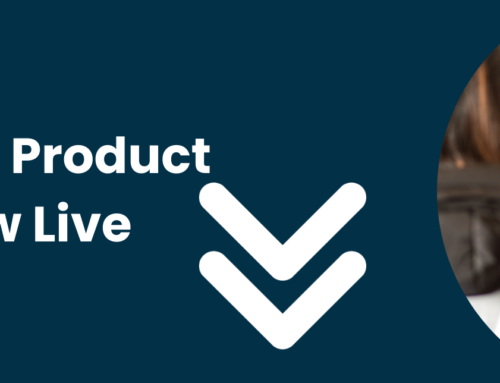Hi everyone and welcome to this week’s protection update.
Great to see you if you came to our Income Protection webinar this Tuesday. There was some good content in that session and we will be doing this again next Tuesday with a new set of providers – registration links in this weeks protection update.
It was also great to see the team at New Mortgage Solutions – Francis, Greg and Luke! Thanks for making Kim and myself so welcome and it was great to spend a few hours with you.
Now this week I want to talk about Disclaimers.
Disclaimers for Protection
Some of you will immediately know what I’m talking about and I’m sure many of you have something like this in your sales process.
But for those of you who don’t know what I’m referring to, a disclaimer is a simple document that the client signs to say they do not want insurance or aren’t interested in talking about it.
We know that some clients buy protection and some don’t.
We know that in order to be really successful and most of the time; you need to have a process that helps the client to buy into the problem.
You’ll remember I said last week that perhaps a bad example would be ask your customer “are you interested in life insurance”?
Why is that not a good question?
Well, it’s a closed question. (You can only really get a yes or no answer)
But does the client really understand what this means?
Probably not and it does sound like you’re trying to sell them something.
They can’t buy into the solution if they don’t fully appreciate the problem.
So, if the customer says “No, I’m not interested in life insurance;” the door is now closed and you’ve got to work hard to win this back around.
You’ve not given the customer the opportunity to make an informed decision about what this actually means.
So maybe a better question is “is it important to you to make sure your family don’t lose the home should the worst happen”?
Does that give them a better understanding of the problem? Probably, yes because who really wants that for their family.
Now we know that the solution to fix this problem is life insurance. but framing the question this way helps them to buy into the problem and that’s going to make it easier to buy into the solution.
So, let’s get back to the topic in hand; disclaimers…
North Pole, South Pole
Its my belief that you must have a good sales process when dealing with mortgage customers when it comes to positioning protection.
Why?
Because on one hand, you’re talking about something incredibly exciting and positive. Not a mortgage but a new home! That is special for customers and they know they need you to arrange the finances to make it happen.
But on the other hand, we’re trying to weave a conversation in about terrible things potentially happening such as death, heart attacks, cancer and those are not easy things to talk about. People don’t enjoy talking about them and it’s not natural for us either.
The scenarios for both of these needs are potentially at polar opposites.
- Get a new home
- Imagine you die or get sick
So let’s say you have a disclaimer.
It’s a document which; when the client says “I don’t want to discuss these areas of protection with my adviser” – they sign it and they date it.
What I’ve seen in the past with the use of disclaimers is at polar opposites also. Sometimes really good, sometimes really bad.
For this to be properly effective as a tool in your toolbox is how you position things.
Let’s say you said to your customer: are you interested in life insurance, critical illness cover or income protection?
The client says no.
You say, ok, then I need you to sign this form and they sign it.
In your compliance file you tell us at the network “Client did not wish to talk about protection”.
Now in the event of a future complaint; it might help if you have that on file.
But is that really what a disclaimer is all about?
From a sales point of view, that’s a bad outcome for you and it’s a bad outcome for the client if something actually happens in the future.
Use a disclaimer to your advantage
Disclaimers can be incredibly powerful and you can use them to get the point across again if the client isn’t getting it. Think of it as another bite of the cherry!
Let’s use the scenario of a mortgage customer.
You talk about the risks associated with arranging a mortgage. Remember this is a loan secured on your property for a very long time.
Secured means the property can be repossessed if you cannot maintain the monthly payments.
Explain that the regulator for financial services (the FCA) put a statement on every single mortgage illustration and every single mortgage offer.
Explain that as a professional and responsible adviser, you have a duty is to highlight these risks. Why? Because they are very serious and very important.
The risk it’s talking about could be devastating. You could lose your home!
That is not a good outcome for you or your family.
But there are different risks that could put you in that position.
You could die or you could become sick.
So if the client says, “but I’m not bothered and I’ll take my chances”.
You say “well ok then. I appreciate that”
But I need you to sign this form for our file.
What this means is that YOU are taking full responsibility for this.
Now in that moment; that might jolt the customer. In this world where we have a blame culture; you’re making a point that this is a transfer of responsibility from you to them.
If you’ve got a couple of clients, explain it to both of them and get them both to sign the document.
Now, what happens next?
Some will sign it and that is the end of that.
But some won’t. It might give them pause for thought. They might start to realise that you’re talking which you think is about something incredibly serious and you’ve made it clear that this is about the objective of preventing a situation where they could lose the family home.
I’ve seen several examples over the years where this has worked to great effect.
I remember one adviser who worked in London and he wasn’t getting anywhere with this young couple when it came to talking about protection. They came to his office and they (or should I say, the man) didn’t want to do anything. His partner was sitting on the fence and not saying very much.
The adviser said exactly what I’ve just said.
You came to me for professional advice but that means the whole package – buying the home but also not losing it at some point in the future because you can’t afford it any more.
If you are saying that you don’t want to listen to what I’ve got to say; I need you to sign this document which means you’re taking the responsibility from me to you.
It’s up to you…
At that, the female said “it sounds quite important. What exactly are you talking about?”
Then man said “ok, what is it…
He didn’t want to sign this bit of paper. He didn’t want to sign something to say he was taking this responsibility.
What do you think happened next?
Fast forward… they bought everything. Life cover, Critical Illness Cover and some Income Protection. Was it all maxed out? No, but they went away with protection cover in all the risk areas.
And the moral of that story is that the purpose of the disclaimer wasn’t about satisfying the needs of compliance (although it wouldn’t be a bad idea to have something which the client signs)
But it was an instrument that if lets say, you haven’t quite explained things correctly, or they aren’t quite understanding the seriousness of the situation; it could help you get your point across in a different kind of way.
Will it work all of the time? No
If it works some of the time, could it be a good idea? Yes.
I spoke with Mark Culham recently and he told me about what they do at HB Partners and it sounded like a strong and robust process. Steve Jascourt does the mortgages and signposts that protection is a part of this whole process. We expect it the conversation to happen and it is agreed right at the very start. And that gives them a really good conversation from mortgages to protection.
Talking to Francis Worman from New Mortgage Solutions yesterday; he told me about a situation where he was with a client who said they didn’t want to discuss protection. Francis closed his file and said “I’m really sorry, but I don’t think I’m the adviser for you then. It’s not how we work here…”
We can use different tactics in our sales process to get protection on the agenda and elevate the importance of it.
Clients are not always going to get the point straight away and they will become defensive if they think they are being sold to without understanding whether they need it.
We are just the same when we get an unexpected knock on the front door. It could be the deal of the century but will we listen?
We’re working on a new disclaimer here at the network and we will let you have that very shortly and we can continue the debate about the best way to use these.
Income Protection Webinars
So finally, I just need to signpost our last 2 protection development webinars of the year.
Protecting Incomes takes place next Tuesday at 10am. I’ll top and tail it and my guest speakers are form British Friendly, Liverpool Victoria and Cirencester Friendly.
Then on the 30th November we’ve got a shorter webinar called “A Smarter way to underwrite Income Protection”. This is a collaboration between The Exeter and UnderwriteMe.
So that’s it from me once again.
Have a great weekend everyone and Ill see you next week!



